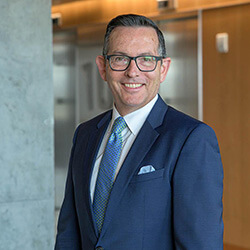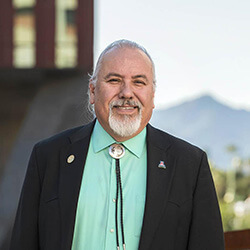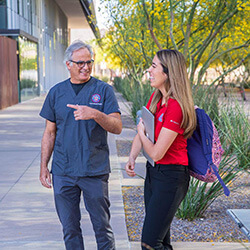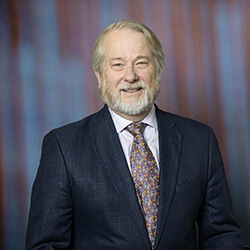
Workforce Development at Heart of PCP Scholarship Success

The Primary Care Physician (PCP) Scholarship program is part of the core mission of the University of Arizona Health Sciences: aiding aspiring physicians who wish to practice in Arizona’s underserved urban and rural communities.

“What’s sad is it’s not just our state. Across the nation there’s well over 50,000 medical school applicants and just 20,000 seats available,” he said, citing data from the Association of American Medical Colleges (AAMC).
Because of the cost of medical school, students tend to select specialties that offer higher salaries or move to more lucrative markets in other states so they can more easily pay down loans, said Dan Derksen, MD, associate vice president for Health Equity, Outreach and Interprofessional Activities for U of A Health Sciences. According to the AAMC, the average medical student debt was nearly $195,000 at public universities and $223,000 at private ones in 2022.
“One of the barriers to health professions education is the cost of that education, and that’s really across the board,” Dr. Derksen said. “It’s true also for nursing, dental and mental health. The PCP Scholarship program is an innovative step to help address physician shortages in Arizona.
“The State of Arizona recurring appropriation that subsidizes the PCP Scholarship Program enhances the health professional community-based experiential learning that’s supported by the state and the federally funded and designated U of A Area Health Education Center (AzAHEC) Program,” Dr. Derksen added. “Of the 56 AHEC programs in the U.S., our program did almost 12% of the nation’s total AHEC program community-based, experiential rotations. Ours are done in collaboration with Arizona’s six AzAHEC Regional Centers and nine Rural Health Professions Programs (RHPPs) in the five U of A Health Sciences colleges, ASU’s College of Nursing, and NAU’s School of Nursing and their Physician Assistant programs.”
Exposure inspires success
The Primary Care Physician Scholarships are an incentive to keep more physicians in Arizona by easing the financial burden for those who commit to a career in one of seven primary care fields: family medicine, general internal medicine, geriatric medicine, general pediatrics, psychiatry, obstetrics and gynecology, and general surgery.

Carlos Gonzales, MD, previously assistant dean for curricular affairs at the U of A College of Medicine – Tucson, chaired the college’s PCP Scholarship committee before stepping down to join the Health Sciences’ Global MD program this month. He also was director of the college’s RHPP and Commitment to Underserved Peoples (CUP) Program, which he says complement the goals of the PCP Scholarship program.
“The reason I think we’re successful is students are exposed to those CUP and rural experiences,” said Dr. Gonzales, adding that nearly all of the College of Medicine – Tucson’s PCP Scholarship recipients participated in free CUP clinics and similar community service experiences, as do 90% of the college’s first- and second-year students.
“That tells me we’re attracting students who want to do that, and we get students that do want to go into primary care. It’s just the mindset of students coming to our schools. That’s what we need – to have more students go into primary care,” he added.
Drs. Gonzales and Fogerty underscored that pipeline programs at both colleges, such as Med-Start and Saturday Scrubs, improve chances by providing opportunities for local middle and high school students from underserved populations to gain exposure to career opportunities in the health sciences.
Jonathon Cartsonis, MD, the College of Medicine – Phoenix’s Rural Health Professions Program director, agreed.

That was part of his motivation, too. He grew up in Litchfield Park, Arizona, then a rural area cut off from west Phoenix by the Agua Fria River. He graduated from the College of Medicine – Tucson and completed his residency in Modesto, California, at a county hospital that served many migrant farmworkers, recent immigrants and refugees. He then worked at a community health center in Maricopa County, where he served mostly uninsured and state-insured patients near his hometown.
“I treated people I went to school with, from kindergarten, grade school and up through high school,” Dr. Cartsonis said. “My patient load was really well-represented by folks from a number of marginalized communities in Arizona. That was really satisfying.”

HPSA designations identify areas and population groups in the U.S. experiencing shortages of health professionals. According to the Kaiser Family Foundation, Arizona ranks ninth in the nation with 244 primary care HPSA designations that include 3.3 million people. These aren’t just in the state’s 13 more rural counties, but two of the more metropolitan ones, too. According to the Arizona Department of Health Services, 12 of the state’s Medically Underserved Areas lie within Native American tribal land.
“Maricopa and Pima counties, home to Phoenix and Tucson, have significant HPSA designations, so there are a lot of choices for returning physicians on where to practice,” Dr. Derksen said. “The intent of the Primary Care Physician Scholarships is to create incentives and eliminate fiscal barriers so our medical school graduates can practice in high need areas and serve the unmet needs of Arizona’s rural and urban underserved populations. That’s what makes this an incredibly inspiring program.”
PCP Scholarships
To learn more about the Primary Care Physician Scholarships or to apply, visit the College of Medicine – Tucson and College of Medicine – Phoenix websites.
Media Contact
David Mogollon
Manager, Campus Communications and Publications
U of A Health Sciences
This story originally appeared on U of A Health Sciences Connect website.
About the College
Founded in 2007, the University of Arizona College of Medicine – Phoenix inspires and trains exemplary physicians, scientists and leaders to advance its core missions in education, research, clinical care and service to communities across Arizona. The college’s strength lies in our collaborations and partnerships with clinical affiliates, community organizations and industry sponsors. With our primary affiliate, Banner Health, we are recognized as the premier academic medical center in Phoenix. As an anchor institution of the Phoenix Bioscience Core, the college is home to signature research programs in neurosciences, cardiopulmonary diseases, immunology, informatics and metabolism. These focus areas uniquely position us to drive biomedical research and bolster economic development in the region.
As an urban institution with strong roots in rural and tribal health, the college has graduated more than 1,000 physicians and matriculates 130 students each year. Greater than 60% of matriculating students are from Arizona and many continue training at our GME sponsored residency programs, ultimately pursuing local academic and community-based opportunities. While our traditional four-year program continues to thrive, we will launch our recently approved accelerated three-year medical student curriculum with exclusive focus on primary care. This program is designed to further enhance workforce retention needs across Arizona.
The college has embarked on our strategic plan for 2025 to 2030. Learn more.